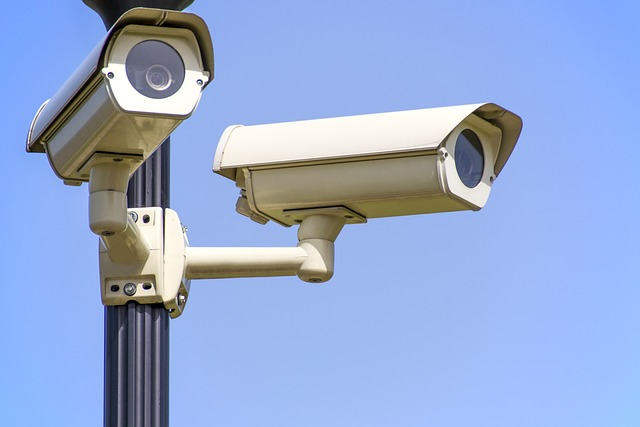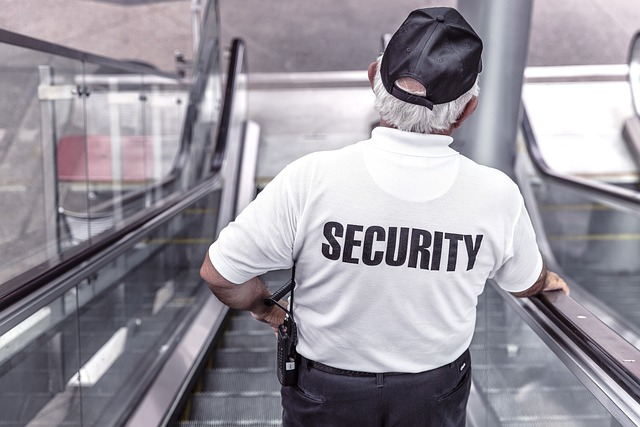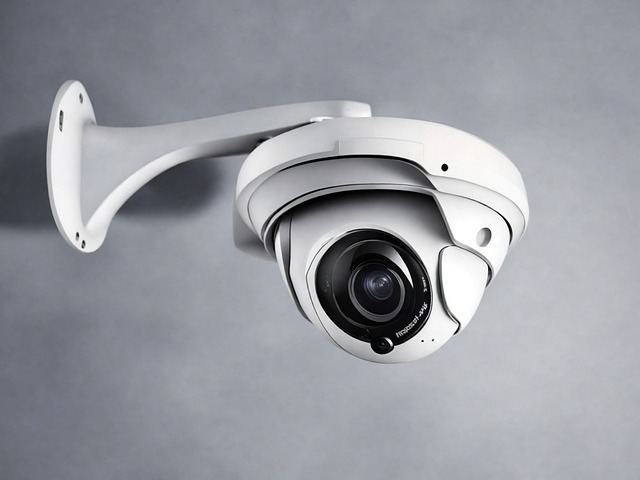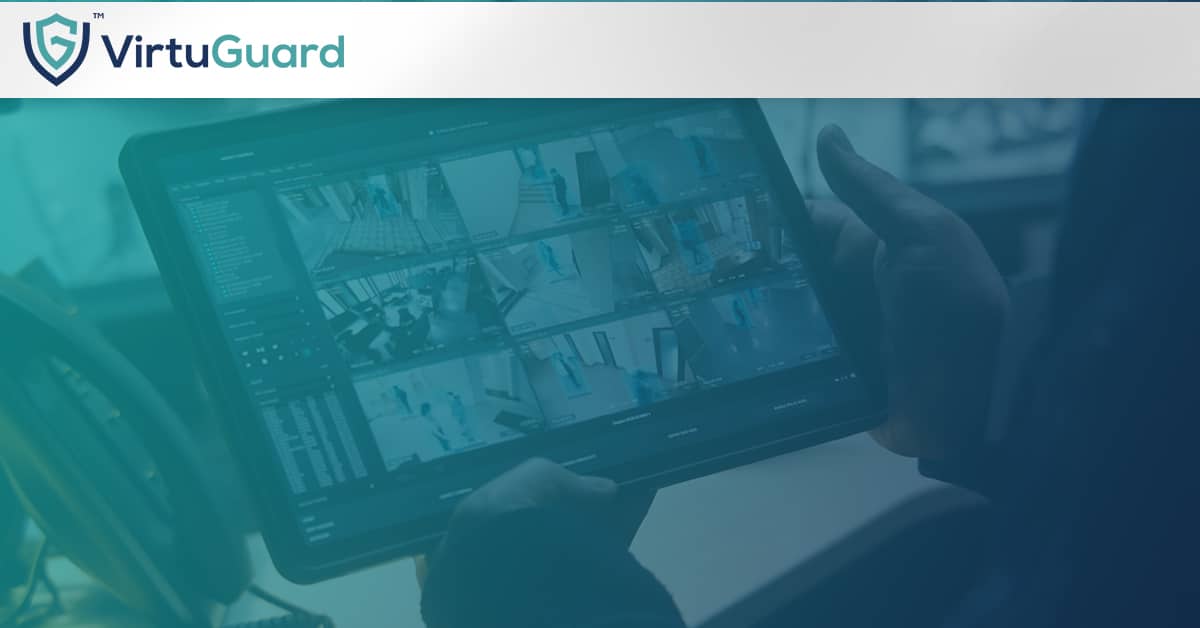Traditional security guards have been the go-to solution for businesses to ensure safety and deter criminals. However, as technology advances and businesses evolve, it has opened the door for distribution security guard alternatives. The more efficient and cost-effective alternative has become apparent. Enter the world of remote security monitoring, artificial intelligence in security solutions, and two-way audio communication. With these innovative approaches, companies can save money, enhance surveillance capabilities, and streamline their security operations.
In this blog post, we will delve into the ultimate distribution security guard alternative that addresses your security needs. We will discuss remote security monitoring, the role of artificial intelligence in security solutions, how two-way audio communication enhances remote security, the importance of operational audits, and real-life case studies of successful implementation.
Key Takeaways
- Remote security monitoring is an innovative and cost-effective approach to protecting property and assets.
- Implementing AI into security solutions provides advanced surveillance, predictive analysis, threat identification & automated access control systems.
- Case studies demonstrate successful implementation of alternative security measures with increased coverage, faster response times & cost savings.
Embracing Remote Security Monitoring

Remote security monitoring is revolutionizing the security industry by providing a cost-effective and efficient alternative to traditional security guards. This innovative approach involves security officers monitoring properties through the internet using video cameras and advanced technologies. They can detect and respond to potential threats, ensuring the safety of your property and assets around the clock.
Implementing remote security monitoring allows businesses to enjoy comprehensive protection, crime prevention, and simultaneous monitoring of multiple locations. This solution is not only more powerful than relying on guards alone, but it is also more cost-effective, as it reduces the need for hiring and training security guards.
How Remote Monitoring Works
Live remote monitoring involves real security officers, including armed security guards if necessary, using the internet, video cameras, and advanced technologies to detect and respond to potential threats on properties. Employing technologies such as:
- Video surveillance systems
- Alarm systems
- VPN encrypted transmission channels
- Cloud servers
Allows remote security monitoring to work in sync with other security services, providing a complete security solution.
The integration of remote monitoring systems with other security systems, such as access control and CCTV systems, creates a multi-layered and more effective security system through the utilization of the Internet of Things (IoT).
Benefits of Remote Security Monitoring
Remote security monitoring offers numerous advantages, including crime deterrence, cost savings, and the capacity to monitor multiple locations simultaneously, which helps in mitigating security risks. Cloud-based Video Surveillance gives businesses the ability to monitor and record activity within their premises in real time. This provides users with enhanced security, whilst also deterring potential intruders. When compared to traditional security measures, remote security monitoring provides cost-efficiency, flexibility, and effectiveness. With 24/7 surveillance through monitoring security cameras, real-time monitoring, and response to security incidents, remote monitoring reduces the need for a large on-site presence, resulting in lower labor costs and greater efficiency.
Moreover, remote security monitoring can help reduce energy costs by automatically adjusting heating and cooling systems, providing a cost-effective alternative to traditional security measures. Implementing remote monitoring and access control systems better equips businesses to protect their property, employees, and assets from potential threats, while also realizing significant cost savings.
Implementing Artificial Intelligence (AI) in Security Solutions
Artificial Intelligence (AI) has made its mark in various industries, and the security sector is no exception. AI plays a significant role in enhancing the effectiveness of remote monitoring and access control systems. It enhances remote security monitoring through real-time analysis of video feeds, increased efficiency, and aiding monitoring agents in recognizing unusual circumstances. AI-powered security cameras can accurately detect humans and vehicles, reducing false alarms and enhancing overall security.
With the integration of AI in security solutions, businesses can benefit from advanced surveillance, predictive analysis, and threat identification. AI-powered security systems, such as Google’s Cloud Security AI Workbench, Cofense, and IntelliVision, serve as examples of how AI can be utilized to improve security measures.
AI-Powered Video Surveillance
AI-powered video surveillance systems possess several primary characteristics, including threat detection, object recognition, facial recognition, real-time analysis, enhanced monitoring, and advanced analytics. These systems can identify a variety of potential threats, such as intrusions and unauthorized access, suspicious behavior, object detection, facial recognition, crowd monitoring, and vehicle monitoring.
Speeding up the processing of video footage, AI-powered video surveillance supports the efforts of virtual security officers, enabling remote guards to swiftly respond to potential security threats and take the necessary steps. AI-powered cameras can cover a larger area and surpass the limitations of human line of sight, providing comprehensive surveillance coverage.
Automated Access Control Systems
Automated access control systems utilize Artificial Intelligence to administer building access, offering enhanced security and convenience for property owners and tenants. AI bolsters the performance of automated access control systems by:
- Automating surveillance
- Enabling preemptive security measures
- Interconnecting systems
- Anticipating threats
- Utilizing advanced analytics
- Augmenting accuracy and reaction times
- Automating administration
- Optimizing security operations.
Cloud-based access control systems enable remote monitoring and management of building or property entrances. Administrators can use an internet-connected device to dictate who is allowed access. Additional security features can be implemented in cloud-based access control systems, such as:
- Multi-factor authentication
- Encryption
- Remote monitoring and management
- Audit trails and reporting
- Integration with other security systems
This integration of AI-powered access control systems enhances building security while streamlining access management.
Two-Way Audio Communication: Enhancing Remote Security
Two-way audio communication is another innovative approach that enhances remote security by enabling virtual security officers to intervene during incidents. Some technologies employed for two-way audio communication in remote security include:
- Microphone and speaker systems integrated into security cameras or intercom systems
- IP cameras with two-way audio capabilities
- Audio monitoring technology with real-time communication
- Video intercom systems with push-to-talk functionality
These technologies allow for effective communication and intervention in remote security situations.
Adhering to recommended practices for utilizing voice-down audio announcements ensures effective remote security monitoring. Installing audio speakers throughout the property guarantees that virtual security officers can issue warnings or instructions to individuals on the property, potentially preventing criminal activity or dangerous situations from escalating.
Voice-Down Audio Announcements
Voice-down audio announcements are a technology that allows virtual security officers to deliver warnings or instructions to people on the premises, potentially mitigating criminal activity. When used in conjunction with real-time video surveillance, voice-down audio announcements have proven to be highly efficacious in deterring crime and undesirable behavior as soon as it is identified. AI-enabled cameras with automated voice-downs can detect potential threats and deploy audible and visual warnings to avert crime from occurring. Voice-down units can transform surveillance cameras into proactive crime prevention units.
Utilizing text-to-speech technology, the integration of AI improves voice-down audio announcements by converting written content into spoken words, making it more accessible and engaging for listeners. AI can also enhance the accuracy of emotion detection in voice recordings, resulting in more nuanced and expressive audio announcements.
Recommendations for Installing Audio Speakers
When installing audio speakers for remote security, one must consider the following factors:
- Ceiling height
- Acoustic conditioning
- Number of speakers
- Type of speakers
- Loudness of the sound
- Type of sound
Strategically designing the audio system to ensure optimal coverage and clarity is essential to guarantee effective communication during security events.
Installing two-way audio speakers throughout the property enables virtual security officers to intervene with voice-down audio announcements, potentially preventing criminal activity or hazardous situations from escalating.
Operational Audits: Assessing Your Security Needs

Operational audits are an essential aspect of assessing a company’s security measures and identifying areas for improvement. Conducting an operational audit allows businesses to:
- Evaluate the effectiveness of their security protocols
- Identify areas that require enhancement
- Ensure the efficiency, productivity, and cost effectiveness of security operations within an organization.
Operational audits involve establishing objectives, gathering information, analyzing security vulnerabilities, making recommendations, and reporting. Utilizing tools such as SolarWinds IT audit software, log collection and management tools, security information and event management (SIEM) systems, vulnerability scanners, and penetration testing tools can aid in conducting a thorough and effective operational audit.
The Goal of an Operational Audit
The goal of an operational audit is to review and assess a company’s security operations and make management aware of any issues. This comprehensive evaluation of security policies, procedures, and practices, as well as an assessment of internal controls and examination of security vulnerabilities, helps businesses enhance their security performance, reduce risks, and ensure the achievement of strategic security objectives.
An operational security audit should be conducted by either internal audit or a competent third party, involving security managers, internal auditors, and other personnel responsible for system security. It is recommended to perform operational security audits at least once a year, depending on the size and scope of the organization, as well as any applicable regulatory requirements.
Implementing Changes Based on Audit Results
Implementing changes based on audit results can lead to improved security measures and overall business efficiency. To address identified issues, businesses should:
- Establish the scope and objectives of the changes
- Gather and evaluate the data from the audit
- Report and communicate the findings to pertinent stakeholders
- Formulate an action plan
- Prioritize the responses
- Implement the corrective actions and improvements outlined in the plan
- Carry out follow-up audits to confirm the changes have been implemented effectively.
The duration of the implementation process post-security audit may vary depending on the scope and intricacy of the audit. Generally, it takes approximately 1 to 3 months to execute the required changes. To prioritize changes based on security audit findings, it is recommended to consider the following factors:
- Impact
- Likelihood
- Effort
- Alignment
- Communication
- Monitoring
Case Studies: Successful Distribution Security Guard Alternatives

Real-life case studies demonstrate the successful implementation of private security guard alternatives, including unarmed security guards, in distribution, addressing the question of how many security guards are needed. Companies that have embraced remote security monitoring, AI-powered access control systems, and two-way audio communication have seen significant improvements in their security measures and cost savings. These security firms have effectively utilized technology to enhance their security guard service.
The following text will discuss two case studies: Company A, which transitioned to remote monitoring, and Company B, which integrated AI-powered access control systems. These examples showcase the effectiveness of these innovative security solutions in addressing various security needs and challenges.
Company A: Transitioning to Remote Monitoring
Company A successfully adopted remote monitoring, resulting in enhanced security coverage and cost efficiency. To transition from traditional security guards to remote monitoring, Company A undertook the following measures:
- Thorough review of their existing security measures
- Investment in sophisticated cameras and positioning structures
- Comprehensive training for their security personnel
- Installation of a real-time monitoring system
- Collaboration with a remote monitoring service provider
Implementing remote security monitoring resulted in the following benefits for Company A:
- Increased security coverage
- Cost savings
- Faster response times
- More effective resource utilization, as security personnel could monitor multiple cameras at once.
Company B: Integrating AI-Powered Access Control
Company B integrated AI-powered access control systems, providing improved building security and simplifying access management. These systems operate by analyzing and processing data from various sources, such as surveillance cameras, biometric scanners, and user credentials, to make informed decisions about granting or denying access. The AI algorithms can learn and adapt over time, enhancing the precision and productivity of the access control system.
Implementing AI-powered access control systems led to several benefits for Company B, including:
- Improved security and safety
- Integration with other security systems
- Automation of data integration processes
- Operational efficiency
- Heightened security
- Improved user experience
- Capacity to process large volumes of data
This integration of AI-powered access control systems enhances building security while streamlining access management.
Summary
In summary, the ultimate distribution security guard alternative is a combination of remote security monitoring, artificial intelligence in security solutions, and two-way audio communication. By embracing these innovative approaches, businesses can save money, enhance surveillance capabilities, and streamline their security operations. Companies that adopt these solutions can expect to experience increased security coverage, cost savings, and improved response times.
The integration of AI in security solutions provides businesses with advanced surveillance, predictive analysis, and threat identification capabilities. Additionally, two-way audio communication enables virtual security officers to intervene during incidents, enhancing the overall security of a property. By conducting operational audits, businesses can further assess their security needs and identify areas for improvement.
As demonstrated by the case studies of Company A and Company B, transitioning to remote monitoring and integrating AI-powered access control systems can lead to significant improvements in security measures and cost savings. By investing in these innovative security solutions, businesses can protect their property, employees, and assets from potential threats, ensuring a safe and secure environment.

Frequently Asked Questions
What are the three types of security guard?
There are three types of security guards: government contract security guards, in-house security guards and contract security guards. All are responsible for providing a safe environment.
What are the benefits of remote security monitoring?
Remote security monitoring offers numerous benefits, such as crime deterrence, cost savings, and the ability to monitor multiple locations at once, helping reduce security risks.
How does AI enhance the efficacy of remote security monitoring?
AI dramatically increases the efficacy of remote security monitoring by enabling real-time analysis of video feeds, improved efficiency, and aiding in recognizing abnormal situations.
